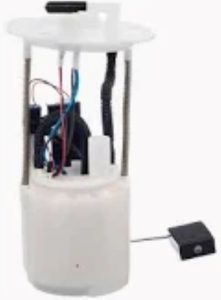Decreased throttle response can result directly from fuel pump problems because insufficient fuel pressure prevents the engine from receiving the exact amounts of fuel necessary for acceleration. Systems built for about 40 PSI would experience a delay in throttle response from slow acceleration and in some cases, stall, if a fuel pump were to fail and pressure to drop. However, modern engines are equipped with electronic throttle control (ETC) systems that promptly mix fuel and air based on throttle input. But a broken fuel pump makes a bottleneck in this process so that more time is taken following a high rev.
In order to have balance in air and fuel ratios, throttle response needs correctly pressurized air and fuel, and if a pump is unable to sustain this pressure, your balance suffers. For instance, even small engines have a loss in throttle with a high-performance engine dictated by fuel delivery of 10-15% that will compromise performance and general fuel consumption. In one segment of a 2020 report, the National Highway Traffic Safety Administration pointed out fuel pump failures on select models did cause such poor throttle response that it could become a safety risk for operators.

Heat also degrades fuel pumps, but it does it by causing vapor lock in the throttle; the fuel is vaporizing too soon, somewhere along the way to the engine, affecting fuel flow. In hot weather areas, drivers see 20 percent more throttle problems related to vaporization of the fuel at the pump. This is particularly troublesome while accelerating hard, when you need lots of fuel (when the throttle is at a high angle) and the pump may not be able to provide it because of vapor blockages.
If you bear with me, you will soon realize I stole the title of this piece from Jeremy Clarkson who once said, “Throttle response is the thing that makes a car feel alive! This feeling of “aliveness” disappears when the fuel pumps go out as the engine loses its ability to respond smoothly to throttle inputs. Bad throttle response not only leads to a lack of driving pleasure but can also affect safety when you need to pick up speed quickly of course.
In addition, fuel pumps that have more than 100,000 miles on them are simply more vulnerable to wear and performance deterioration and may be unable to meet the fuel needs of electronic throttle devices. You want your Fuel Pump to remain functional and in good working order so there are no hiccups in throttle response or power delivery to the rest of the engine at any driving condition.